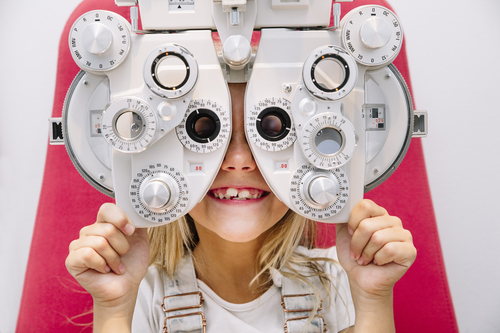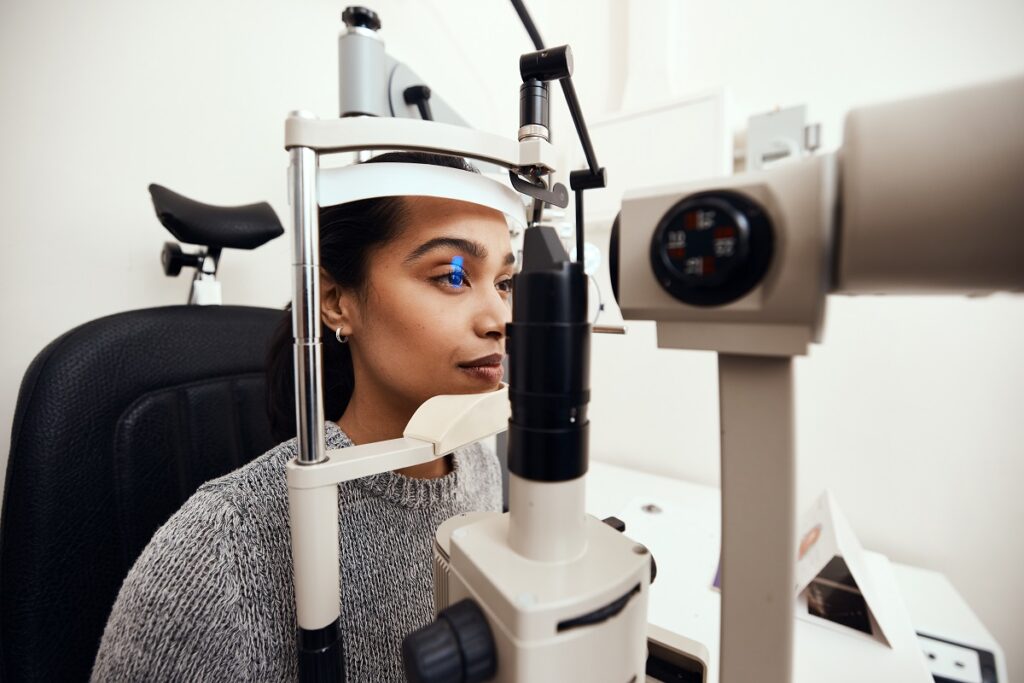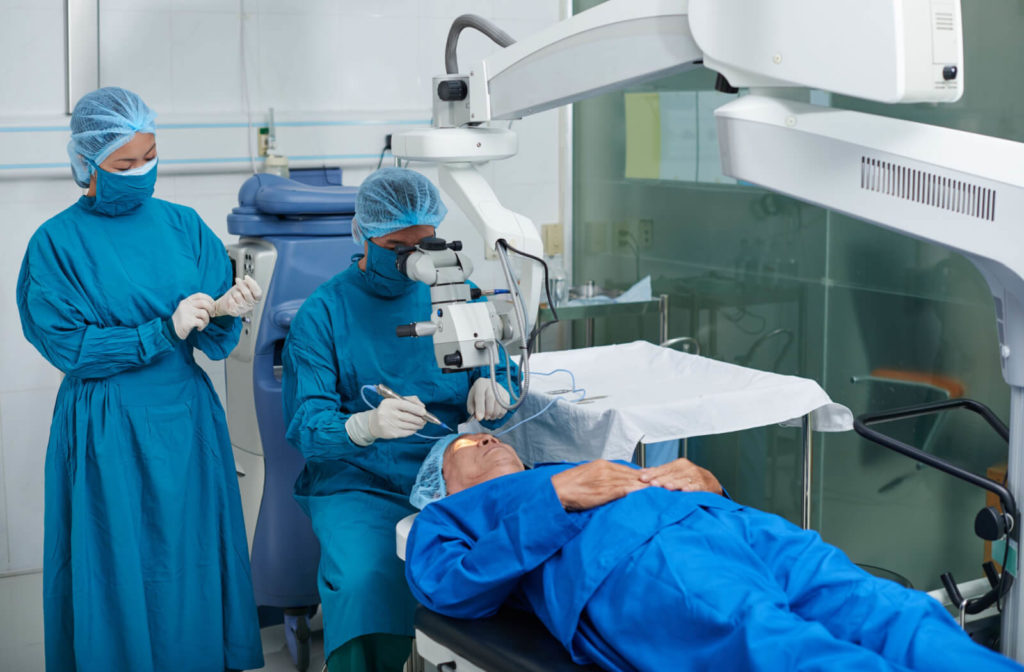Why Picking an Eye Doctor Optometrist is Necessary for Your Eyes
Why Picking an Eye Doctor Optometrist is Necessary for Your Eyes
Blog Article
Checking Out the current Technological Developments in Optometry and What They Mean for Eye Doctors
From the accuracy of Optical Coherence Tomography to the nuanced understandings used by AI-driven diagnostic tools, these innovations are setting new standards in individual evaluation and treatment. As these innovations permeate the practice, eye doctors are faced with the difficulty of embracing these devices to enhance person end results.
Technologies in Diagnostic Tools
Advancing the field of optometry, innovations in diagnostic devices have actually transformed the way eye care specialists assess and detect eye problems and aesthetic impairments. The past years has witnessed substantial technological innovations, enabling more detailed and precise examinations. Optical Coherence Tomography (OCT), for example, provides high-resolution cross-sectional images of the retina, enabling the very early detection of conditions such as glaucoma and age-related macular degeneration. This non-invasive imaging method has ended up being crucial in contemporary optometric practice.
An additional trick innovation is the introduction of sophisticated corneal topography systems, which map the surface area curvature of the cornea with precision. These devices are particularly useful for fitting call lenses and detecting corneal conditions. Digital retinal imaging has actually changed standard ophthalmoscopy, supplying in-depth, panoramic sights of the retina that assist in complete aesthetic evaluations.
The advancement of wavefront aberrometry has actually additionally been crucial, allowing the analysis of refractive errors with unparalleled accuracy (Opticore Optometry). This modern technology aids in customizing restorative lenses and enhancing medical outcomes for refractive surgical treatments. Jointly, these diagnostic developments encourage eye doctors to provide superior client treatment, ensuring early treatment and customized therapy techniques, eventually improving aesthetic health and wellness results
AI in Individual Management
Structure on the foundation of innovative analysis devices, the incorporation of synthetic knowledge (AI) in individual monitoring represents a transformative jump for optometry. AI systems are significantly utilized to improve performance, accuracy, and customization in person treatment. By examining huge quantities of information, AI can recognize patterns and predict potential ocular conditions, enabling eye doctors to tailor interventions more effectively. This ability is important in taking care of persistent eye conditions such as glaucoma and diabetic retinopathy, where very early detection and continuous tracking are essential.
In addition, AI-driven systems help with streamlined patient interactions and administrative procedures. Automated organizing, online consultations, and personalized follow-up plans not only boost person contentment but likewise maximize time management for experts. These systems can triage clients based on the urgency of their problems, ensuring that those in critical demand get punctual interest.
In addition, AI boosts decision-making by providing optometrists with evidence-based referrals and therapy paths. By integrating information from electronic wellness documents, AI devices provide understandings that educate medical decisions, decreasing the threat of errors and boosting client end results. As AI proceeds to develop, its function in person management will likely increase, improving the landscape of optometric treatment.
Advances in Retinal Imaging
In the world of optometry, retinal imaging has actually seen exceptional technical innovations that are boosting analysis capacities and individual treatment. Advancements such as Optical Coherence Tomography (OCT) and fundus photography have changed just how optometrists visualize and examine the retina.
Boosted imaging methods like OCT angiography are additional refining analysis accuracy. This non-invasive method maps blood flow in the retina, offering crucial understandings right into vascular health without the demand for dye shots. Furthermore, More about the author adaptive optics innovation is being integrated into retinal imaging systems to correct eye aberrations, providing extraordinary photo clarity. Such developments facilitate the identification of minute retinal adjustments that might signify condition progression.
Moreover, improvements in artificial knowledge are enhancing retinal imaging by enabling computerized evaluation of large datasets. These systems aid optometrists in determining patterns a measure of pathology, thus enhancing diagnostic accuracy and performance. Jointly, these advancements are transforming retinal imaging right into a cornerstone of contemporary eye care, improving results and expanding restorative possibilities.
Teleoptometry's Growing Duty
Teleoptometry is progressively coming to be an important element of eye treatment, driven by innovations in electronic interaction and analysis devices. As optometry embraces electronic makeover, teleoptometry helps with remote consultations, enabling optometrists to prolong their solutions beyond conventional boundaries. This is especially advantageous in country and underserved areas where access to specialized eye care is often restricted. By leveraging high-resolution video clip conferencing and progressed retinal imaging, eye doctors can carry out thorough eye tests from afar, guaranteeing prompt diagnosis and treatment.
The integration of expert system (AI) more improves teleoptometry, allowing the analysis of visual information and helping in the detection of eye problems such as glaucoma and diabetic person retinopathy. AI-powered algorithms can swiftly interpret complicated imaging information, supplying optometrists with beneficial insights that strengthen medical decision-making.
Furthermore, teleoptometry sustains connection of treatment with seamless integration with electronic health and wellness records (EHRs), permitting eye doctors to preserve thorough patient histories. When consulting with various experts., this makes certain that clients obtain tailored and consistent care even.
In spite of these advantages, challenges stay, consisting of making sure data safety and security and managing person expectations. Teleoptometry stands for a significant stride in the direction of even more accessible, effective, and patient-centered eye treatment. As technology develops, its function is positioned to broaden even more.

Future Patterns in Eye Treatment
A myriad of innovative trends is set to improve the future of eye treatment, driven by technical innovations and the developing requirements of people. One significant pattern is the assimilation of expert system (AI) in diagnostics, which guarantees to boost the accuracy and effectiveness of eye evaluations. AI algorithms can analyze large amounts of data from retinal pictures, potentially discovering problems like diabetic person retinopathy and glaucoma earlier than typical methods.
Additionally, tailored medicine is obtaining grip in optometry, with genetic screening notifying tailored treatment strategies. This strategy aims to optimize patient outcomes by customizing treatments to specific genetic accounts. Wearable modern technology, such as smart call lenses, is also imminent, offering real-time monitoring of intraocular stress or glucose levels, hence giving constant understandings into systemic and eye wellness.
The fostering of augmented truth (AR) and digital truth (VR) in training and patient education and learning is an additional emerging trend. These innovations offer immersive experiences that can boost understanding and skills both for eye doctors and clients. As these patterns develop, optometrists have to stay abreast of technological developments to provide sophisticated care, ensuring better individual end results and satisfaction in the dynamic landscape of eye treatment.
Final Thought

Jointly, these analysis developments encourage optometrists to deliver premium individual treatment, making sure very content early intervention and customized therapy approaches, inevitably enhancing visual wellness end results.

As these innovations proceed to evolve, eye doctors need to adjust and incorporate them right into method, eventually enhancing operations efficiency and raising the criterion of eye care supplied to individuals.
Report this page